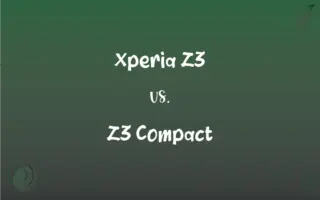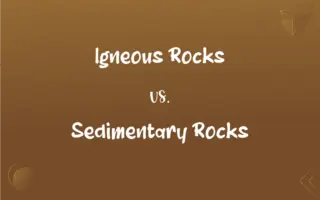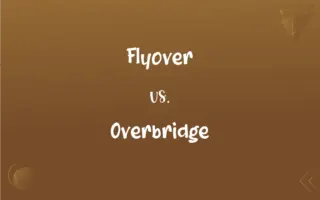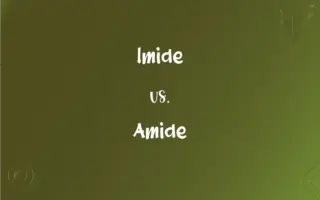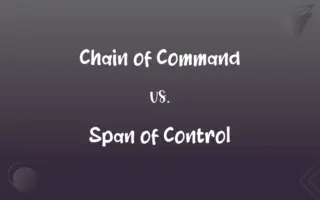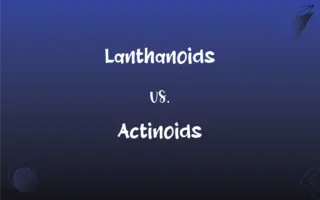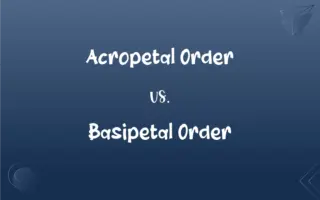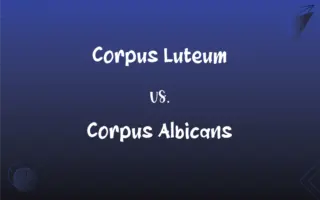Direct Life Cycle vs. Indirect Life Cycle: What's the Difference?
Edited by Aimie Carlson || By Harlon Moss || Updated on October 7, 2023
Direct life cycle involves an organism progressing from birth to death with no metamorphic stages, while an indirect life cycle includes intermediate, often morphologically distinct stages, like larvae, before reaching adulthood.

Key Differences
The concept of a direct life cycle holds a pivotal position in the study of various organisms, chiefly encompassing a straightforward progression from birth, through maturity, to death, without the intervention of distinct, transformative stages. Contrastingly, an indirect life cycle weaves through a more complex journey, interweaving phases like larval stages that exhibit notable morphological distinctions from the mature organism, thereby imposing an additional layer of developmental complexity.
In the realm of a direct life cycle, the organism, post-embryonic development, tends to resemble its adult form, experiencing growth, potentially some minor changes, but essentially retaining its fundamental shape and form throughout its life. Whereas, in an indirect life cycle, organisms often undergo substantial morphological and physiological changes, commonly through processes like metamorphosis, traversing through life stages that may inhabit different ecological niches or environments.
Broadly speaking, direct life cycles may be observed in many mammals, where the young, although less developed, resemble miniature versions of their adult counterparts, and simply grow and mature without undergoing drastic morphological changes. On the flip side, an indirect life cycle, such as those witnessed in amphibians or insects, embark on a journey where entities like tadpoles or larvae transition, often dramatically, into entirely different forms as they metamorphose into adults.
From an ecological perspective, direct life cycles might streamline the resource and habitat requirements of an organism, since all life stages occupy similar niches and utilize analogous resources. Indirect life cycles, conversely, may sprawl across varied habitats and resources, as disparate life stages, such as larvae and adults, might inhabit different environments, hence potentially mitigating intraspecific competition by segregating the ecological demands of different life stages.
In terms of evolutionary biology, organisms with direct life cycles may display different selective pressures, focusing on optimizing traits across a uniform body plan and life history strategy. Contrastingly, organisms navigating through an indirect life cycle may encounter a mosaic of selective pressures, as their various life stages traverse through different ecological and environmental contexts, potentially offering a rich tapestry of adaptive strategies and evolutionary trajectories.
ADVERTISEMENT
Comparison Chart
Morphological Changes
Minimal and continuous
Often drastic and discontinuous
Developmental Stages
Typically lacking distinct intermediate stages
Includes distinct intermediate stages, e.g., larvae
Ecological Niche Utilization
Generally uniform throughout life
May vary significantly between life stages
Evolutionary Implications
Selective pressures may be relatively uniform
Diverse selective pressures across different stages
Example Organisms
Many mammals (e.g., humans)
Amphibians, insects (e.g., frogs, butterflies)
ADVERTISEMENT
Direct Life Cycle and Indirect Life Cycle Definitions
Direct Life Cycle
Organisms with direct life cycles experience growth and development without shifting through dramatically different life stages.
Elephants display a direct life cycle, wherein the young ones simply grow larger and mature, maintaining their general morphology.
Indirect Life Cycle
An indirect life cycle involves several distinct developmental stages, often including a metamorphic transition.
Frogs exhibit an indirect life cycle, metamorphosing from aquatic tadpoles to terrestrial adults.
Direct Life Cycle
Direct life cycles characterize developmental processes where the immature organism essentially resembles a smaller version of its adult form.
Dogs, through their direct life cycle, transition from puppies into adults while maintaining a consistent form.
Indirect Life Cycle
Indirect life cycles represent a developmental process where organisms transition through various discrete life stages.
The sea urchin, through its indirect life cycle, undergoes metamorphosis from a planktonic larva to a benthic adult.
Direct Life Cycle
A direct life cycle refers to an organismal developmental pattern that does not include intermediate morphologically distinct stages.
Humans exhibit a direct life cycle as they grow from infants to adults without undergoing a metamorphic phase.
Indirect Life Cycle
Indirect life cycles utilize different ecological niches for their various morphologically distinct stages.
A butterfly experiences an indirect life cycle, transitioning from a crawling caterpillar to a flying adult.
Direct Life Cycle
In direct life cycles, organisms grow and mature by essentially enlarging and gradually developing their existing structures.
A kitten undergoes a direct life cycle, gradually growing into an adult cat without intermediary, distinct stages.
Indirect Life Cycle
In indirect life cycles, organisms undergo notable physical and often ecological changes as they mature.
The mosquito demonstrates an indirect life cycle, transforming from an aquatic larva to a flying adult.
Direct Life Cycle
Direct life cycles denote a linear progression from birth through maturity to death, devoid of substantive morphological transformations.
Through its direct life cycle, a giraffe will progressively grow taller and mature, but never metamorphose into a different form.
Indirect Life Cycle
Indirect life cycles often involve a larval stage, which is morphologically and ecologically different from the adult stage.
The life cycle of a starfish is indirect, as it develops from a free-swimming larva into a benthic adult.
FAQs
What defines a direct life cycle?
A straightforward progression from birth through maturity to death without distinct intermediate stages.
How does parental investment differ between life cycle types?
It can vary widely and is influenced by factors like offspring number, lifespan, and environmental stability.
Can you provide an example of an indirect life cycle?
Frogs, transitioning from tadpoles (larval stage) to adults through metamorphosis.
How does habitat use differ in indirect life cycles?
Different stages may inhabit diverse environments, e.g., aquatic larvae and terrestrial adults.
Why might an indirect life cycle be evolutionarily advantageous?
It can reduce competition between life stages and allow exploitation of different ecological niches.
How does an organism transition between stages in an indirect life cycle?
Through processes like metamorphosis, involving substantial physiological and morphological changes.
Does specialization to different environments occur in indirect life cycles?
Often yes, different stages might be highly adapted to specific environments or ecological niches.
What’s an example of a direct life cycle organism?
Humans, as they grow from infants to adults without a larval stage.
Are direct life cycles common in mammals?
Yes, most mammals typically exhibit a direct life cycle.
Can an organism have a partially direct and indirect life cycle?
Not in conventional definitions; usually, a life cycle is categorized as either direct or indirect.
Can environmental factors influence life cycle type?
Yes, environmental pressures can influence the evolution and maintenance of life cycle types.
Do all animals have a direct life cycle?
No, various organisms, such as some insects and amphibians, have indirect life cycles.
Are there any plants with an indirect life cycle?
Yes, some plants like ferns have an indirect life cycle, alternating between sporophyte and gametophyte generations.
What factors might drive the evolution of direct vs. indirect life cycles?
Factors like ecological niche availability, competition, and predator pressures might play roles.
Do indirect life cycles require more energy than direct ones?
Not necessarily, but they may allocate energy differently across various life stages.
Does disease transmission relate to life cycle type in parasitic organisms?
Yes, some parasites with indirect life cycles require multiple hosts for completion.
Is one life cycle type superior to the other?
No, the suitability of a direct or indirect life cycle depends on the specific ecological and evolutionary context of the organism.
Is metamorphosis always present in an indirect life cycle?
Typically yes, it is a common feature that defines various life stages.
Are there organisms that can exhibit both direct and indirect life cycles?
Yes, some organisms, due to environmental or resource variations, can exhibit both life cycle types facultatively.
Can you name an organism with a very complex indirect life cycle?
The liver fluke, requiring multiple hosts and environments through its various stages.
About Author
Written by
Harlon MossHarlon is a seasoned quality moderator and accomplished content writer for Difference Wiki. An alumnus of the prestigious University of California, he earned his degree in Computer Science. Leveraging his academic background, Harlon brings a meticulous and informed perspective to his work, ensuring content accuracy and excellence.
Edited by
Aimie CarlsonAimie Carlson, holding a master's degree in English literature, is a fervent English language enthusiast. She lends her writing talents to Difference Wiki, a prominent website that specializes in comparisons, offering readers insightful analyses that both captivate and inform.
